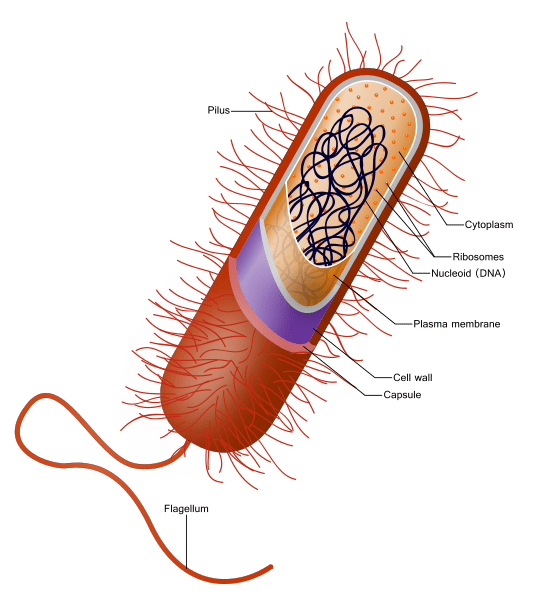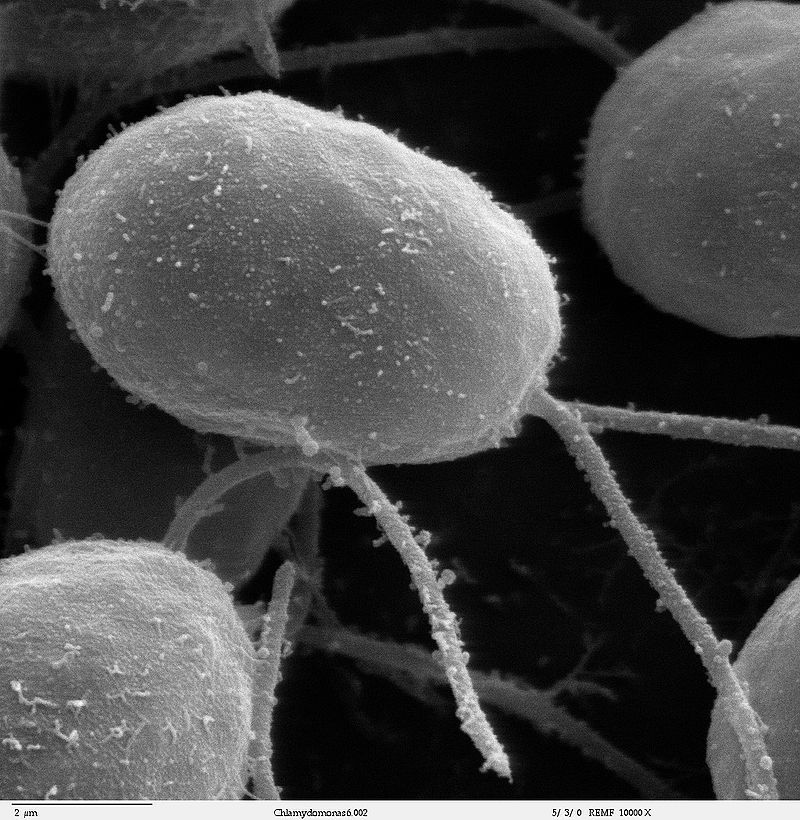Difference Between Pili and Flagella
Key Difference – Pili vs. Flagella
Pili and flagella are two types of extracellular filaments, which are attached to the cellular membrane of most of the prokaryotes including bacteria and archaea. Pili and flagella are different from one another. A key difference that can be identified between the two stems from the function of these two extracellular filaments. Pili are mainly involved in adhesion, biofilm formation, and DNA exchange. Flagella mainly support rapid swimming motility. However, the two types may have common functions like acting as an adhesive structure and as locomotors. Both these structures are formed through the self-assembly of small protein subunits. In this article, the difference between pili and flagella will be elaborated.
What are Pili?
Pili are sometimes referred to as fimbriae. They are short, thin filamentous structures found in certain bacterial cells and are made up of protein subunits called pilin. Usually, pili are more numerous than flagella and give a hairy appearance for the bacterial cell. Pili mediate many functions, including adhesion, biofilm formation, and DNA exchange. There are two types of pili; (a) F-pili, which facilitate DNA transfer through cell-cell conjugation, and (b) P-pili, which mediate adhesion. P-pili is shorter than F-pili.

What are Flagella?
Flagella of bacteria are long, helical, semi-rigid, hollow tubular structures made up through the self-assembly of thousands of small protein subunits called protein flagellin. These structures are highly antigenic and act as propellers for motility of the bacteria cells. Flagella help to move towards a specific direction in response to a chemotactic stimulus. Based on the bacterial species, there may be single or a number of flagella dispersed all over the cell or completely absent. Each flagellum can be 2-20 μm long and is attached to the basal body of the bacterial cell found near the cell membrane. Basal body is a complex molecular structure that rotates like a screw propeller of a ship. Bacterial cells with flagella are less likely to form compact colonies on an agar surface. Unlike the pili, flagella grow by adding protein monomers to their distal growing tips.

What is the difference between Pili and Flagella?
Structure:
Pili are shorter and thinner than flagella.
Flagella are comparatively larger.
Protein sub unit:
Pili are made up of ‘pilin’ protein subunits.
Flagella are made up of ‘flagellin’ protein subunits.
Numbers:
Usually, a prokaryotic cell contains numerous pili resulting a hairy appearance when observed by an electron microscope.
Usually, a prokaryotic cell may contain one to few number of flagella dispersed all over the cell.
Main function:
Pili are mainly involved in adhesion, biofilm formation, and DNA exchange.
Flagella mainly support rapid swimming motility.
Growth:
The growth of pili occurs through the polymerization of the fiber at the base where it hitches to the cellular membrane.
Flagella grow by adding protein subunits to their distal tips.
Image Courtesy:
1. Prokaryote cell By Ali Zifan [CC BY-SA 4.0], via Wikimedia Commons
2. “Chlamydomonas (10000x)“. [Public Domain] via Commons
ncG1vNJzZmivp6x7pbXFn5yrnZ6YsqOx07CcnqZemLyue8OinZ%2Bdopq7pLGMm5ytr5Wau268yKWgZpmemXq3v4yfo5qflaG5ons%3D